
An Incendiary kite [1] (also Firebomb kite, [2] flaming kite, [3] Fire Kite [4] ) is a kite with a bomb, incendiary device, or Molotov cocktail attached.

An Incendiary kite [1] (also Firebomb kite, [2] flaming kite, [3] Fire Kite [4] ) is a kite with a bomb, incendiary device, or Molotov cocktail attached.
Kites were first used in warfare by the Chinese. [5] [6] During the Song dynasty the Fire Crow, a kite carrying incendiary powder, a fuse and a burning stick of incense, was developed as a weapon. [7] Walter de Milemete's 1326 De nobilitatibus, sapientiis, et prudentiis regum treatise depicts a group of knights flying a kite laden with a black-powder-filled firebomb over the wall of a city. [8] According to Samguk Sagi , in 647 Kim Yu-sin, a Korean general of Silla, rallied his troops to defeat rebels by using flaming kites which also scared the enemy. [9] In the 17th century, the forces of Thai king Phetracha tied gunpowder barrels to kites used for airborne assault. [6]

During the 2018 Gaza border protests Palestinians from the Gaza Strip have flown fire bomb kites over the Israel–Gaza barrier, setting fires on the Israeli side of the border, [10] [11] [12] [13] Since the beginning of May 2018, [14] longer range helium filled incendiary balloons, devised from party balloons and condoms, have been used alongside the kites. [15] [16] [17] In one instance, a falcon outfitted with a harness with flaming material at the end was utilized as well. [18]
As of 10 July 2018, incendiary kites and balloons have started 678 fires in Israel, destroying 2,260 acres (910 ha) of woodland and 1,500 acres (610 ha) of agricultural fields as well as causing additional damage to open fields. [19]
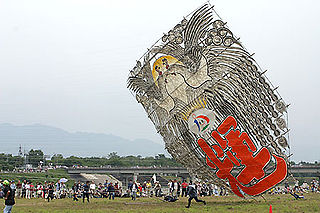
A kite is a tethered heavier-than-air or lighter-than-air craft with wing surfaces that react against the air to create lift and drag forces. A kite consists of wings, tethers and anchors. Kites often have a bridle and tail to guide the face of the kite so the wind can lift it. Some kite designs do not need a bridle; box kites can have a single attachment point. A kite may have fixed or moving anchors that can balance the kite. The name is derived from the kite, the hovering bird of prey.

Firebombing is a bombing technique designed to damage a target, generally an urban area, through the use of fire, caused by incendiary devices, rather than from the blast effect of large bombs. In popular usage, any act in which an incendiary device is used to initiate a fire is often described as a "firebombing".
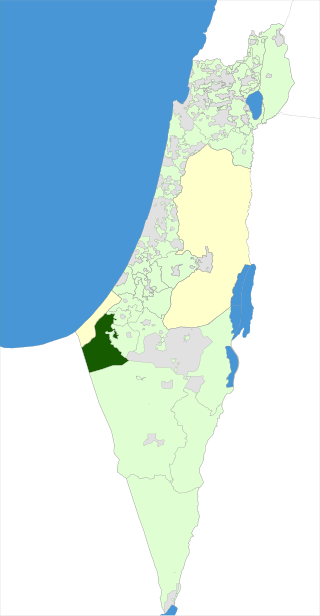
Eshkol Regional Council is a regional council in the north-western Negev, in Israel's Southern District. The regional council's territory lies midway between Ashkelon and Beersheba, bounded on the west by the Gaza Strip while the eastern border abuts the territory of the Bnei Shimon Regional Council. Due to its proximity to the Gaza Strip, the region has experienced numerous sporadic waves of violence, primarily as a result of rocket attacks, mortar strikes, and fires caused by incendiary kites and balloons launched from Gaza Strip. These waves of violence often result in widespread damage to farms and structures within the region.

The Gaza War, also known as Operation Cast Lead, also known as the Gaza Massacre, and referred to as the Battle of al-Furqan by Hamas, was a three-week armed conflict between Gaza Strip Palestinian paramilitary groups and the Israel Defense Forces (IDF) that began on 27 December 2008 and ended on 18 January 2009 with a unilateral ceasefire. The conflict resulted in 1,166–1,417 Palestinian and 13 Israeli deaths. Over 46,000 homes were destroyed in Gaza, making more than 100,000 people homeless.
Timeline of the Gaza War. For events pertaining to the conflict which occurred before 27 December 2009, see Gaza War (2008–2009)#Background and 2007–2008 Israel–Gaza conflict.

Since 2001, Palestinian militants have launched tens of thousands of rocket and mortar attacks on Israel from the Gaza Strip as part of the continuing Israeli–Palestinian conflict. The attacks, widely condemned for targeting civilians, have been described as terrorism by the United Nations, the European Union, and Israeli officials, and are defined as war crimes by human rights groups Amnesty International and Human Rights Watch. The international community considers indiscriminate attacks on civilian targets to be illegal under international law. Palestinian militants say rocket attacks are a response to Israel's blockade of Gaza, but the Palestinian Authority has condemned them and says rocket attacks undermine peace.
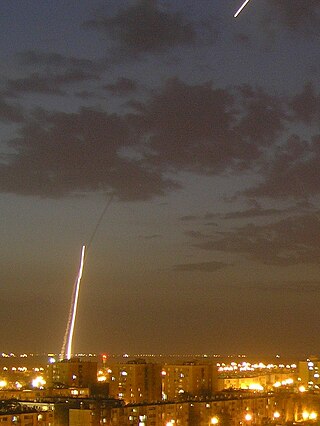
In November 2012, the Israel Defense Forces (IDF) launched Operation Pillar of Defense, which was an eight-day campaign in the Hamas-governed Gaza Strip, beginning on 14 November 2012 with the killing of Ahmed Jabari, chief of the Gaza military wing of Hamas, by an Israeli airstrike.
The 2012 Israeli operation in the Gaza Strip was a military operation carried out in the Gaza Strip by the Israel Defense Forces starting on 14 November 2012, following rocket attacks on Israeli territory launched from Gaza during the preceding days.

The 2014 Gaza War, also known as Operation Protective Edge, and Battle of the Withered Grain, was a military operation launched by Israel on 8 July 2014 in the Gaza Strip, a Palestinian territory that has been governed by Hamas since 2007. Following the kidnapping and murder of three Israeli teenagers in the West Bank by Hamas-affiliated Palestinian militants, the Israel Defense Forces (IDF) initiated Operation Brother's Keeper, in which some 350 Palestinians, including nearly all of the active Hamas militants in the West Bank, were arrested. Hamas subsequently fired a greater number of rockets into Israel from the Gaza Strip, triggering a seven-week-long conflict between the two sides. It was one of the deadliest outbreaks of open conflict between Israel and the Palestinians in decades. The combination of Palestinian rocket attacks and Israeli airstrikes resulted in over two thousand deaths, the vast majority of which were Gazan Palestinians. This includes a total of six Israeli civilians who were killed as a result of the conflict.
The following is a timeline of the 2014 Gaza War. Over 2014, Palestinians suffered the highest number of civilian casualties since the Six-Day War in 1967, according to a United Nations report, given the July–August conflict, and rising tolls in the West Bank and East Jerusalem. A spike in Israeli casualties also occurred. 2,256 Palestinians and 85 Israelis died, while 17,125 Palestinians, and 2,639 Israelis suffered injuries.
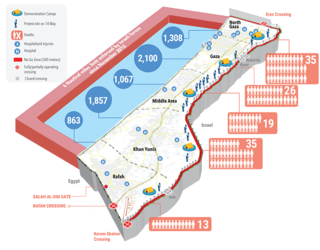
The 2018–2019 Gaza border protests, also known as the Great March of Return, were a series of demonstrations held each Friday in the Gaza Strip near the Gaza-Israel border from 30 March 2018 until 27 December 2019, in which Israeli forces killed a total of 223 Palestinians. The demonstrators demanded that the Palestinian refugees must be allowed to return to lands they were displaced from in what is now Israel. They protested against Israel's land, air and sea blockade of the Gaza Strip and the United States recognition of Jerusalem as capital of Israel.
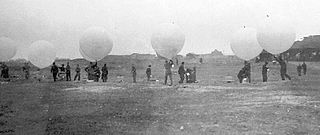
An incendiary balloon is a balloon inflated with a lighter-than-air gas such as hot air, hydrogen, or helium, that has a bomb, incendiary device, or Molotov cocktail attached. The balloon is carried by the prevailing winds to the target area, where it falls or releases its payload.
The Sons of Zouari are a militant group in Gaza who claim to be responsible for launching incendiary kites and balloons into Israel causing damage to fields and land, during the 2018 Gaza border protests. The group's name is a reference to Hamas’s chief drone expert and engineer Muhammad Zouari. In June 2018, the IAF targeted the car of one of the group's leaders, though the car was empty at the time. The group targets both houses and land. Damage by kites has caused damage to thousands of acres of Israeli farmland near Gaza during the 2018 Gaza border protests.
The following is a timeline of events during the Israeli–Palestinian conflict in 2020.
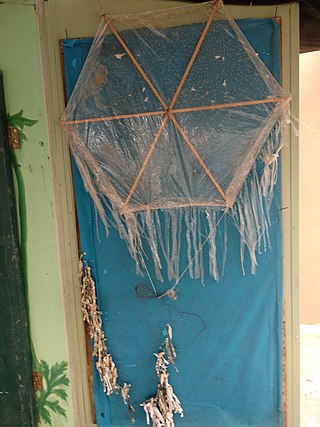
The first wave of Palestinian airborne arson attacks on Israel from Gaza Strip using airborne incendiary devices was launched in May 2018 during the 2018 Gaza border protests. These attacks are taking an advantage of the prevailing westwards winds which propel the airborne devices to Israel. The fires that ensued annihilated distinctive habitats, ecosystems, and agricultural fields.
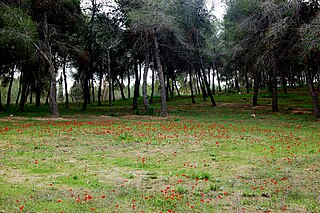
The Be'eri Forest of area about 11,000 dunams is located in the western Negev, within the Eshkol Regional Council area. It was planted by the pioneers of the kibbutz Be'eri.